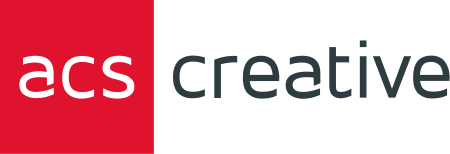Your Handy Dandy Designer Translator
20 Terms Often Heard from Website and Print Design Providers, Explained
At ACS, we always try to communicate with our clients in plain English, not insider jargon. But some words, phrases and acronyms are unavoidable when we’re explaining what we’re going to do for, or need from, them. So here’s our cheat sheet to help you get through your next designer conversation without batting an eye.
Website Design
Wireframe: A diagram of how a website’s pages will be organized. The wireframe should be approved by you before actual site building begins.
Responsive: A website that automatically adjusts to the screen size and shape it’s being viewed on.
Below the fold: The part of the website page not visible on screen unless the user scrolls down to it.
UI: User interface. The website design the user will see.
UX: User experience. How the website behaves, navigates and/or responds to user activity.
Print Design
Bleed: When the design calls for printed elements (i.e. photos) to go to the very edge of the page, we extend those elements 1/4″ beyond the trim line to allow for any slight slippages during trimming.
Gutter: The folded center of a brochure, catalog or magazine, where it’s hard to see type or images. The more pages in the printed piece, the wider the gutter becomes.
Type safety: For the same reason that we do bleed, all typography should be kept at least 1/4″ inside the trim line.
Images
CMYK, RGB: Systems used to reproduce an image in combinations of colored dots. CMYK (cyan, magenta, yellow, black) is preferred for print. RGB (red, green, blue) is used for websites. If a client provides an image in the wrong format, it may have to be converted.
Resolution, DPI: The number of dots per inch (DPI). For websites, 72 DPI will give you good quality. But for print, at least 300 DPI is required. If we used your website images for your brochure, the result would be as blurry as a newspaper photo from the 1940s.
Raster file: A photo or graphic design composed of dots or pixels. To display correctly, the raster file must be the exact dimensions required by the design. File types: .jpg, .gif, .png, .tif.
Vector file: An image NOT built out of dots. Vector files don’t have to be a specific size and can be enlarged without becoming grainy or distorted, so they’re ideal for multi-use graphics like logos. File types: .ai, .eps, .pdf, .svg.
COB, silo, silhouette: They all mean to cut out the background from an element in an image, such as the person in a photo or the shape in a logo. Usually done so that the element can then be layered onto a different background.
Text
Font: A specific typography design. When you buy a font, it will include upper and lower case letters, numbers, punctuation marks and symbols.
Kerning, tracking: Two words for the same thing: the space between the letters of a word.
Leading: The vertical space between lines of type.
Points, picas: Units of size measurement for lettering and spacing.

